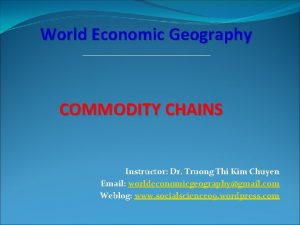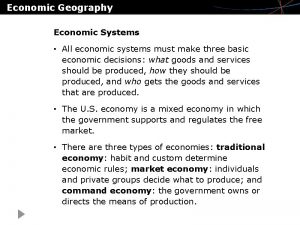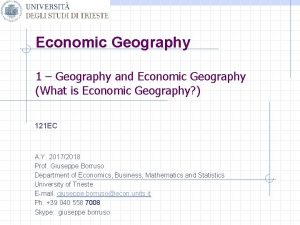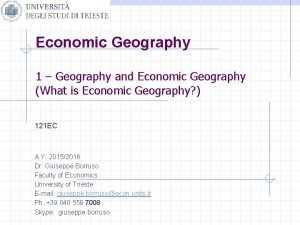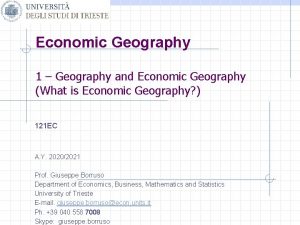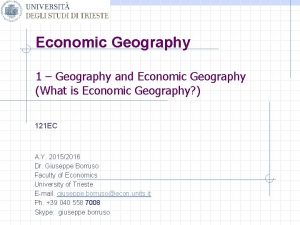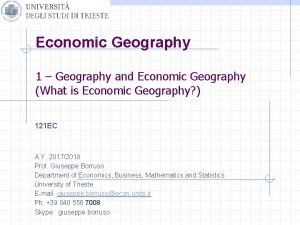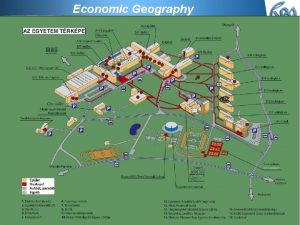New Economic Geography Empirical Analysis Empirical analysis Empirical










- Slides: 10

New Economic Geography Empirical Analysis

Empirical analysis • • Empirical Tests Reduced form versus structural form Reduced form: wage = export/GDP + density + etc Problem 1: omitted bias Problem 2: not really a test of the model. The model cannot be invalidated by this method. Only usefull to understand relationship (if omitted bias not too serious)

Redding and Venable • Multi-country version of Krugman and Venables (1995). • Theoretical wage equation: wage With:

• Market access (market potential) measures the export demand each country faces given its geographical position and that of its trading partners • Supplier access is the export supply each country faces given its geographical position and that of its trading partners

• How to obtain ? • From exportation: Xij= Individual fixed effects used to obtain the predicted value of MA and SA.

• Gravity equation

• Second step: wage equation • Result: market access and supplier access measures are important determinants of income

• FMA alone explains approximately 35% of the cross -country variation in GDP per capita • MA appr 70%

Results • Access to the coast and open-trade policies yield predicted increases in per capita income of over 20% • Halving a country’s distance from all of its trade partners yields an increase of around 25%. • Foreign market access alone explains approximately 35% of the cross-country variation in GDP per capita

Conclusion • A success for the New Econ Geo, from theoretical to empirical analysis. • Explain well differences in GDP per capita between countries • Has been extended to various topics, in particular to explain wage, migration and FDI location choice.






